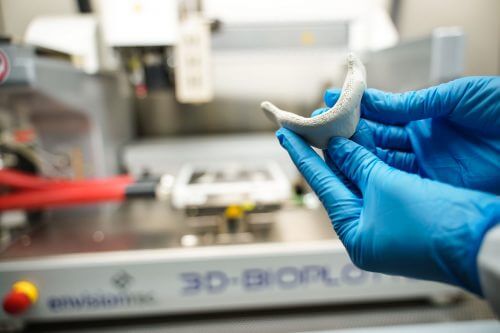The field of tissue engineering has undergone a dizzying development in recent decades, and the Technion took a significant part in this revolution. At the Technion, complex and precise artificial tissues are developed that significantly improve the absorption process in the target organ. This is partly through the creation of tissues that contain a developed system of blood vessels that quickly connect to the patient's blood vessels.

A center for printing cells, tissues and organs was established in the Faculty of Biomedical Engineering at the Technion. The dean of the faculty Prof. Shulamit Levenberg, who heads the center, said that "the new center is open to all researchers at the Technion and will lead the tissue engineering field at the Technion to new areas."
The field of tissue engineering has undergone a dizzying development in recent decades, and the Technion took a significant part in this revolution. At the Technion, complex and precise artificial tissues are developed that significantly improve the absorption process in the target organ. This is partly through the creation of tissues that contain a developed system of blood vessels that quickly connect to the patient's blood vessels.
The XNUMXD bioprinting center for printing cells and biomaterials will give a significant boost to the tissue engineering field at the Technion. The center operates an innovative printer that prints XNUMXD scaffolds and the cells that will grow on them into tissue. The printer translates the information obtained from the CT scans of the specific patient into a XNUMXD tissue adapted to the area of the injury.
The printer is relevant to all fields of regenerative medicine and enables the printing of various tissues and the integration of controlled release systems.
The printer has several heads, which allow the creation of a printed embroidery consisting of different materials. It is equipped with precise motors that move at a variable speed and with an accuracy of 0.001 mm, and a built-in camera that improves the accuracy of the printing needle. The system is suitable for a wide variety of raw materials such as hydrogels, thermoplastic materials and ointments, while precisely controlling temperatures and radiation (in the ranges of 70-0 degrees, 250-30 degrees and ultraviolet radiation). The printing can be done directly into a growth plate.

2 תגובות
When will you print a heart and a kidney from stem cells... you promised us this already a decade ago... people are dying...
Thank you very much